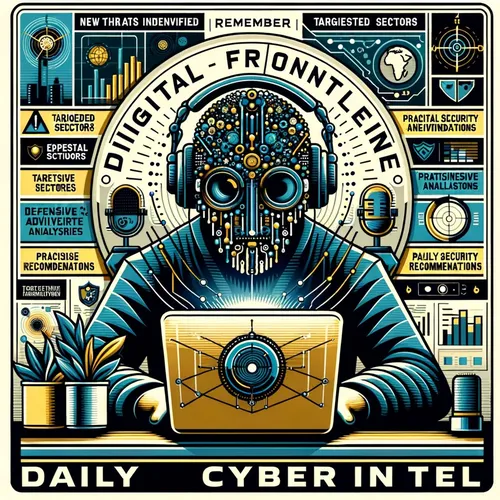Microsoft, Nvidia Tangled in US-China Cyber Crossfire: Whos Hacking Who?
- Author
- Quiet. Please
- Published
- Fri 01 Aug 2025
- Episode Link
- https://www.spreaker.com/episode/microsoft-nvidia-tangled-in-us-china-cyber-crossfire-whos-hacking-who--67219895
This is your Digital Frontline: Daily China Cyber Intel podcast.
Hey listeners, this is Ting on your Digital Frontline, where I decode the latest twists in the US–China cyber rivalry—so grab your secure connection, because today’s intel is sizzling.
First up, Microsoft is neck-deep in the cyber crossfire yet again. In revelations that could make even the most seasoned IT pro double-check their firewalls, Chinese state-backed researchers are accusing US intelligence agencies of exploiting zero-day vulnerabilities in Microsoft Exchange servers to target critical Chinese defense firms. The Cyber Security Association of China just disclosed two cases—one involving a Microsoft Exchange bug and another attacking electronic document systems—which they claim went undetected for nearly a year. This tit-for-tat isn’t new: remember that 2021 Chinese-linked Exchange hack that swept tens of thousands of servers? Microsoft, meanwhile, continues to say Chinese threat groups are their biggest headache, with recent strikes on SharePoint software impacting at least 400 US government agencies and corporations. So if your enterprise runs Exchange or SharePoint on-prem? Pause and patch—yesterday.
But the cyber chess match isn’t stopping at servers. Nvidia, led by the ever-charismatic Jensen Huang, is in Beijing’s hot seat after just two weeks of ecstatic headlines about H20 AI chips being cleared for the Chinese market. China’s Cyberspace Administration summoned Nvidia execs, grilling them about alleged backdoors that could allow these chips to be tracked or remotely disabled, stoking fears that Washington’s Chip Security Act—you know, the one pushed by Bill Huizenga and Bill Foster—means US chips might come with an on-off switch for Beijing. Nvidia insists there’s no hidden access, but—you guessed it—the narrative on both sides just fuels suspicions and more regulatory headaches for multinationals.
For US businesses and public sector orgs, here’s your defensive play-by-play: Prioritize patching Microsoft Exchange and SharePoint, especially any touching classified, legal, or R&D data. Restrict outbound traffic from sensitive servers and implement zero-trust network models. If you're using AI chips from Nvidia or others, review firmware and endpoint monitoring tools for abnormal activity or calls home. Threat intelligence platforms must be plugged directly into security operations—automation is your friend here, because human analysts alone can’t keep up with state-level APT groups.
Experts from the health, energy, and finance sectors are sounding alarms: state-backed cyber campaigns are increasingly leveraging supply chain compromises, remote code execution, and even targeting security vendors themselves. The next 24 hours? Expect continued DDoS probes on infrastructure and ramped-up phishing targeting legal, logistics, and banking sectors, especially midsize organizations with underfunded IT teams.
Remember, in this shadowy cyber feud, attribution is tough, the tech is bleeding-edge, and the risks are global—not local. So patch, audit, educate, and never, ever trust a chip or server implicitly.
Thanks for tuning in to Digital Frontline. If you want your cyber news sharp and up-to-date, make sure to subscribe! This has been a quiet please production, for more check out quiet please dot ai.
For more http://www.quietplease.ai
Get the best deals https://amzn.to/3ODvOta
